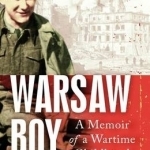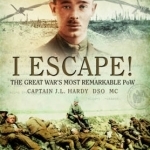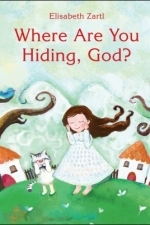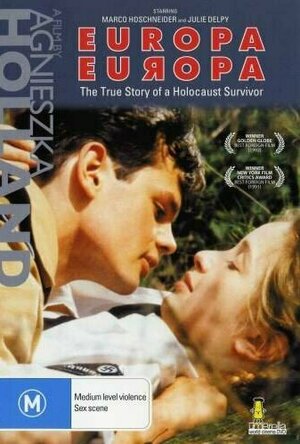Taryn K (444 KP) rated Otherworldly Izakaya Nobu Volume 1 (manga) in Books
Apr 14, 2022
The eatery just 'suddenly appeared' in town and soldiers and locals, and eventually members of the nobility visit in the six chapters of the book, and Chef Nobu and Shinobu-chan are always up for creating something delicious for whomever is visiting at the time. Most issues that come up are taken care of in the chapter they're brought up, and while there are issues that could be explored, like the commander's refusal to eat fried squid tentacles which we end up finding out why in a later volume, they aren't cliffhanger material. The book is written in such a way that if there hadn't been a volume 2-9, it still feels like a complete collection of stories, yet each volume builds on the previous one.
That said, the art is very anime, by which I mean that it is somewhat realistic, but still very cute and a bit exaggerated. The characters are well thought out and slowly introduced one or two at a time, other than the first chapter where we not only meet the chef and Shinobu, but two members of the military, Nikolaus and Hans and eat oden. The second chapter, we meet Commander Bertholdt and eat kara-age chicken. Chapter three, it's Tax Collecter, Gehrnot with spaghetti Napolitan. Chapter four is Viscount Johan Gustav and his niece, Hildegard, enjoying Ankake Yudofu. In chapter five, merchants Ignatz and Kamil discover sashimi and Kaisendon. The sixth and final chapter for this volume brings us back around to Nikolaus and Hans experiencing Tonjiro for the first time.
This manga is all about food and community. So everyone who comes in eventually fits back into the story, interacting with various people in the community, with food very much a part of the interactions. So descriptions of the food and how amazing it is and how different it is from anything in Eiteriach and how well it goes with the draft beer they call "Whatsontapp" make up a good deal of the book. Somehow Chef Nobu always understands what they want, even though the words they use for what they want are German, For example, Commander Bertholdt asks for a huhn dish that goes well with whatsontapp. The chef knows he wants chicken and fries him up kara-age chicken, which is what he calls it. There is mention of schweinefleisch (pork), and mustard/karashi/senf... the translation notes underneath and in the back are very helpful.
It's not a manga to read if you want action, adventure, and excitement, but for a delicious little series to settle down with in between times, it is delightful. I recommend it highly.
Hazel (1853 KP) rated Where Are You Hiding, God? in Books
Jul 5, 2017
Where Are You Hiding, God? is a children’s picture book by the Austrian illustrator Elisabeth Zartl. Originally published in 2013 under the German title Wo versteckst du dich, lieber Gott? it has been translated into English in order to reach a wider audience. Primarily targeted at children of Christian families, the book attempts to explain the concept of God.
The short story begins with an anonymous little girl searching for God in a manner that resembles a game of Hide and Seek. She looks in her bedroom, the bathroom and the garden before giving up in defeat. As she sits desolately alone, a gust of wind and a falling leaf prompt her to realise that God does not have a corporeal body, but is, in fact, everywhere. Exhilarated by her newfound understanding, she exclaims that God was in all the places she looked and that he is inside her, too. God is everywhere.
Aimed at children ages three and over, Where Are You Hiding, God? explores the confusion a child may have in comprehending the idea of God. For a child, knowing something or someone is there but not being able to see them is a difficult idea to grasp. This book, through the demonstration of someone their own age, helps to explain their questions and uncertainties.
Elizabeth Zartl’s illustrations capture the attention of those reading or looking at the pages. Filling each page with a full-colour palette, the drawings are child-friendly but realistic, making it easy to process, and accurately creates a visual narrative of the written words. The language is also suitable for the intended demographic and, although three-year-olds may not be able to read it themselves, they will certainly understand the story.
From a design point of view, the text and illustrations do not quite match up. The full-page artworks make it difficult to place the short sentences in a way that both elements can work together. This, however, is not the fault of the author/illustrator who would have originally been working with a German text.
Overall, Where Are You Hiding, God? is a sweet, short story that can be read to children or grandchildren over and over again. As well as being a source of entertainment, it introduces them to the beliefs they will encounter during their Christian upbringing and prepares them to develop a greater understanding of God.
Hazel (1853 KP) rated Where Are You Hiding, God? in Books
Dec 7, 2018
Where Are You Hiding, God?</i> is a children’s picture book by the Austrian illustrator Elisabeth Zartl. Originally published in 2013 under the German title <i>Wo versteckst du dich, lieber Gott?</i> it has been translated into English in order to reach a wider audience. Primarily targeted at children of Christian families, the book attempts to explain the concept of God.
The short story begins with an anonymous little girl searching for God in a manner that resembles a game of Hide and Seek. She looks in her bedroom, the bathroom and the garden before giving up in defeat. As she sits desolately alone, a gust of wind and a falling leaf prompt her to realise that God does not have a corporeal body, but is, in fact, everywhere. Exhilarated by her newfound understanding, she exclaims that God was in all the places she looked and that he is inside her, too. God is everywhere.
Aimed at children ages three and over, <i>Where Are You Hiding, God?</i> explores the confusion a child may have in comprehending the idea of God. For a child, knowing something or someone is there but not being able to see them is a difficult idea to grasp. This book, through the demonstration of someone their own age, helps to explain their questions and uncertainties.
Elizabeth Zartl’s illustrations capture the attention of those reading or looking at the pages. Filling each page with a full-colour palette, the drawings are child-friendly but realistic, making it easy to process, and accurately creates a visual narrative of the written words. The language is also suitable for the intended demographic and, although three-year-olds may not be able to read it themselves, they will certainly understand the story.
From a design point of view, the text and illustrations do not quite match up. The full-page artworks make it difficult to place the short sentences in a way that both elements can work together. This, however, is not the fault of the author/illustrator who would have originally been working with a German text.
Overall,<i> Where Are You Hiding, God?</i> is a sweet, short story that can be read to children or grandchildren over and over again. As well as being a source of entertainment, it introduces them to the beliefs they will encounter during their Christian upbringing and prepares them to develop a greater understanding of God.
Phillip McSween (751 KP) rated Europa Europa (1992) in Movies
Nov 5, 2019
Acting: 10
This movie can’t be found in many places. In fact, I had to watch the full version on Youtube, something I typically hate to do. We can get into supporting art later. The point I’m trying to make is, I didn’t really know many of these actors, but I was captivated by a lot of their performances, especially the main actor Marco Hofschneider playing the role of Solomon the Jewish boy trying to survive. He captures such a wave of emotions, sometimes in the same scene and you can feel him throughout his entire journey. Before the end of it, his character seemingly feels like a friend that you want to reach out to and help. It wasn’t hard to connect with the characters here.
Beginning: 10
We learn early on why Solomon ends up having to become a German. Essentially everything around him is destroyed and we get to see that in the first ten minutes of the movie. There were a couple of hard scenes involving explosions that really leant themselves to the reality of the movie as a whole.
Characters: 10
Cinematography/Visuals: 10
There is a heartbreaking scene towards the beginning of the movie where men are trying to escape the gruesome war by boat. One of the men jumps back into the ocean as he decides it would be better to go back to the fate they were trying to escape. It’s a scene shot so well in such a bleak fashion of hopelessness as you see throughout the movie.
Conflict: 10
Entertainment Value: 10
Keeps you engaged from beginning to end. Just about everything a movie should be. This action-drama war mix definitely does not disappoint.
Memorability: 8
Pace: 8
Just over an hour in, things start to slow down a taste and you feel the conflict starting to fade. Fortunately it doesn’t take too long for the pace to pick right back up. There is a lingering intensity here from the threat of Solomon being uncovered that keeps the movie at a steady boil.
Plot: 10
Resolution: 10
Overall: 96
I honestly had no idea I would like Europa Europa as much as I did, but was pleasantly surprised. It’s not only thought-provoking but it tugs at your heartstrings while giving you a unique look at a dark time. A highly recommended classic.

Warsaw Boy: A Memoir of a Wartime Childhood
Book
Warsaw Boy is the remarkable true story of a sixteen-year old boy soldier in war-torn Poland 'The...
Sous Les Ordres de Rommel: Des Deserts D'Afrique Du Nord Aux Plages de Normandie
Hans Holler and Markus Reisner
Book
In this extraordinary autobiography by Hans Holler, an Austrian born in 1921 near Wiener Neustadt,...

I Escape: The Great War's Most Remarkable POW
Book
Of all the daring PoW escape stories that have come to light in the last 100 years and immortalized...

The Book Smugglers: Partisans, Poets, and the Race to Save Jewish Treasures from the Nazis
Book
The Book Smugglers is the nearly unbelievable story of ghetto residents who rescued thousands of...
history

Translate Free - Language Translator & Dictionary
Travel and Reference
App
myLanguage Translator Free is a robust and comprehensive free translation solution that has a great...

Wildflower Finder Switzerland – flower field guide
Reference and Travel
App
*** Wildflower Finder Switzerland- THE Swiss app to easily identify the most beautiful wild flowers...


